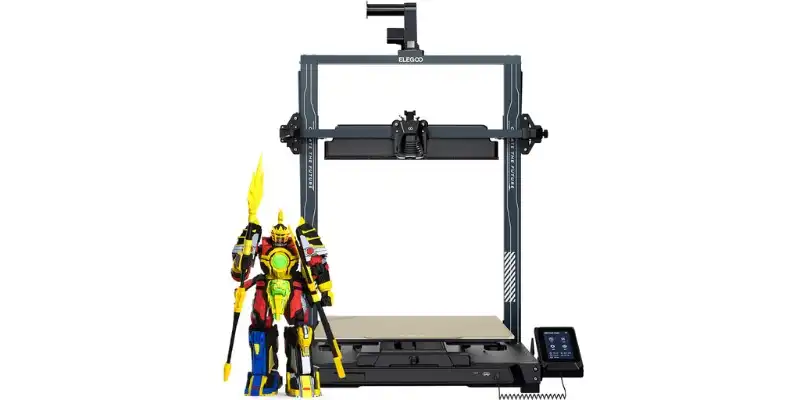Elegoo manufactures some of the highest quality and most affordable resin 3D printers around the world and is one of the most trusted hobbyist brands in the world.
We’ve previously tested Elegoo printers including the Mars range, as well as the new Neptune 4 Max. In this article, we recommend the top Elegoo 3D printers.
So, What’s The Best Elegoo 3D Printer?
The best budget Elegoo resin 3D printers are the Mars series.
From the Mars range, I recommend the Mars 4 Ultra 9K. It’s a good middle-ground mixing high quality and low price.
The best budget FDM Elegoo printers the Neptune 4 overall.
It’s a solid and reliable FDM printer similar to the popular Creality Ender 3 S1, with a direct drive extruder and extremely fast 500mm/s max speeds.
The Elegoo Saturn models are the best for more advanced resin 3D printing.
They cost a little extra, but the bigger build volumes and upgraded specs are sure to meet your needs.
|
|
|
|
|
4.2
|
4.3
|
4.4
|
|
N/A
|
N/A
|
N/A
|

1. Mars 4 Ultra
- Price: Check latest price at Elegoo here / Amazon here
- Build Volume: 153.36 x 77.76 x 165 mm
- Layer Height: 0.01 – 0.2 mm
- Max Print Speed: 150 mm/h
- Connectivity: USB, Wi-Fi
- Ideal For: Hobbyists who want convenience and high-resolution
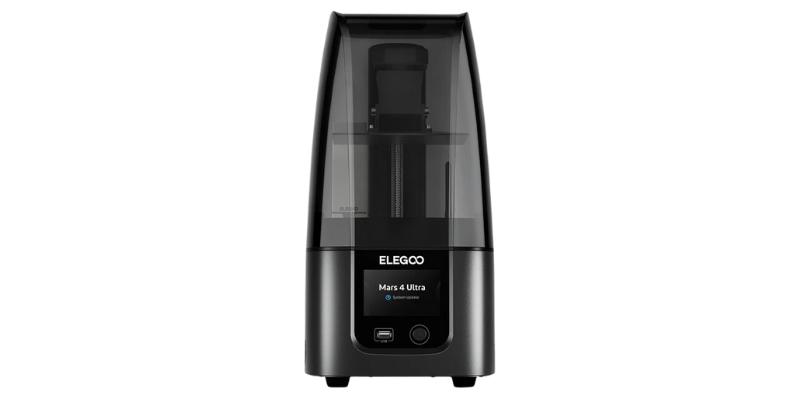
Pros
Extremely high XY resolution
Wi-Fi compatibility
Stable 4-point build plate connection
Cons
ACF film reduces quality by softening/frosting
Incompatible with Elegoo Mars Mate Air Purifier
The Mars 4 Ultra is the successor to Elegoo’s popular Mars 4 resin printer. Elegoo’s forte has always been resin printing, and this printer builds off of the Mars framework.
Where this printer really outshines the competition is in resolution. It has a screen resolution of 8520 x 4320px, which translates to an actual XY resolution of 18 µm. As of writing in March 2024, that’s hands-down the best resolution on a consumer resin printer.

There is a catch: it uses an ACF film instead of the typical FEP. This type of film tends to degrade quality slightly with a softening or frosting effect, which takes away from the Mars 4 Ultra’s super high resolution. You can replace it, but that’s another extra step and yet another extra thing to buy.
I recently tested and reviewed the Mars 4 Ultra, and while it is quite similar to the Mars 4, it has two huge upgrades that can make it worthwhile. The first is Wi-Fi. Many people need to move their resin printers into a garage, shed, or separate workroom thanks to the toxic nature of resin. With Wi-Fi, you won’t have to trek back and forth from your workspace and your computer.
The other advantage is the updated 4-point build plate. This is a more stable design which lowers the chance that you’ll need to revel. With resin, levelling can be a huge pain– especially if you have a lot of resin still left in the vat.
Read more: Anycubic Photon Mono 4K vs Elegoo Mars 3: comparison

Features:
- 7-Inch 9K High Resolution LCD
- Laser-carved Build Plate
- Open Space GOO Format
- Built-in 4G RAM
- Built-in Wi-Fi Connection & High-Speed Wifi Transfer
- 4-point Leveling System
2. Mars 3 Pro 4K
- Price: Check latest price at Elegoo here / Amazon here
- Build Volume: 143 x 90 x 175 mm
- Layer Height: 0.01-0.2 mm
- Max Print Speed: 30-60 mm/h
- Connectivity: USB
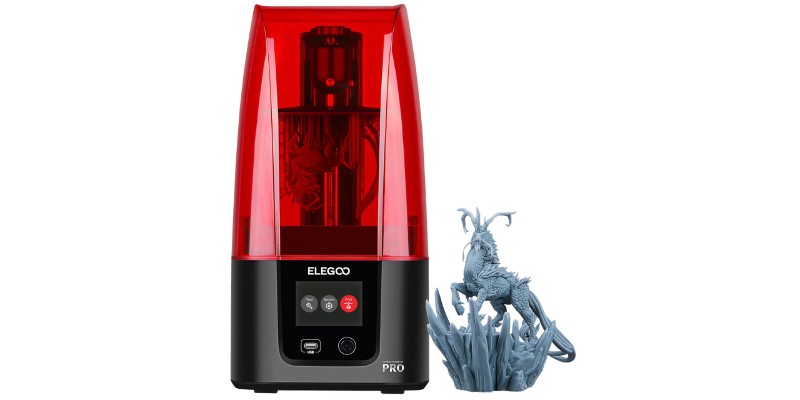
The Elegoo Mars 3 Pro 4K is a fantastic choice for beginners and seasoned makers alike.
The printer features everything you need to produce high-quality prints at an affordable price. It has a 4K LCD, which is by no means the highest resolution, but very much the standard in most entry-level printers these days. Alongside, it has a 35 micron XY resolution, which for the price is excellent and brings out rich, sharp details in small miniatures for tabletop gaming.
The Elegoo Mars 3 Pro 4K’s 143 x 90 x 175 mm build volume isn’t big, but there’s enough room there for modest batch printing and all the go-to resin print projects like small figurines, decorative pieces, jewelry, and minis.
The Mars 3 Pro 4K’s quality of life features are some of the best in its price range. These include a plug-in charcoal filter to minimize odors, compatibility with most slicers such as Chitubox and Lycee, a superb easily replaceable tempered glass PFA screen liner that protects against scuffs and scratches, and a Fresnel lens in the light source said to offer more uniform light distribution for better prints.
3. Neptune 4 Max
- Price: Check latest price at Elegoo here / Amazon here
- Build Volume: 420 x 420 x 480 mm
- Layer Height: 0.1 – 0.4 mm
- Max Print Speed: 500 mm/s
- Compatible Materials: PLA, TPU, PETG, ABS, ASA, Nylon Filaments
- Connectivity: USB, Wi-Fi
- Ideal For: Engineering savvy hobbyists who need large prints on a budget
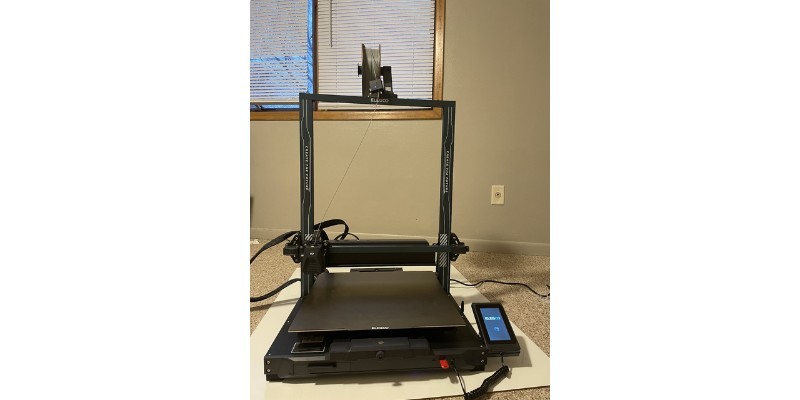
Pros
Massive build volume of 420 x 420 x 480 mm
Pre-installed Klipper hardware to support faster printing
121-point mesh auto leveling
Cons
Prone to print fails and may need tinkering
Few major upgrades from the cheaper Neptune 3 Max
Elegoo might not be known for FDM printers, but they certainly made a splash with the extra-large build volume Neptune 4 Max. At 420 x 420 x 480 mm, you have few limitations for what you print. As I tested during my review of the Neptune 4 Max, one-piece cosplay accessories, statuettes, and larger functional pieces are all very possible.
It has auto bed leveling that uses an inductive sensor and a 121-point mesh, which you can easily check in the UI. This is very helpful for a printer with such a large build plate, since small leveling errors can be magnified across the surface.
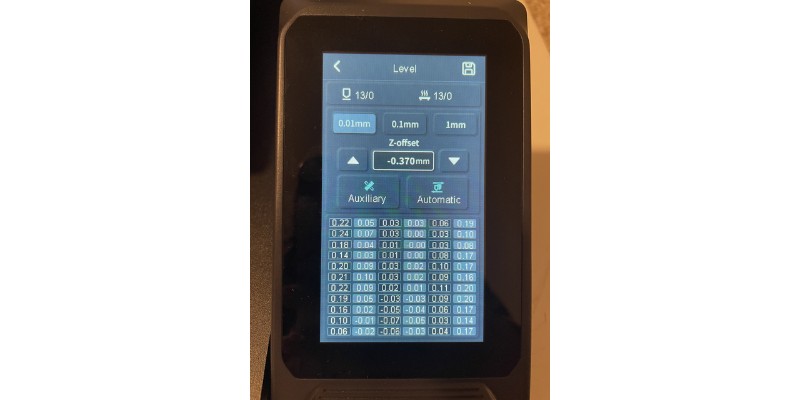
The Neptune 4 Max actually comes with Klipper pre-installed, which is another way that Elegoo tried to set it apart from the competition. Klipper allows for much higher print speeds, if you’re willing to put in the work.
The pre-installed Klipper is a big upgrade over the Neptune 3 Max. However, the two printers are actually very similar. They have essentially the same build volume, the same auto-leveling, and in fact, the Neptune 3 Max might prove to be more reliable. That’s because the Neptune 4 Max was released with a variety of known errors, including printhead clogs.

If you purchase the Neptune 4 Max over the Neptune 3 Max, it would be for the Wi-Fi upgrade or the Klipper pre-install for the insane 500mm/s print speeds. And it does run fantastically once you’ve dialed it in – but, to get there, be prepared for tinkering when problems arise.
With a large 420x420x480mm build volume, integrated auto bed leveling, and fast print speeds enabled by Klipper, the Neptune 4 Max is an affordable option for hobbyists wanting to print big.
However, some tinkering is likely needed to get the best results.
- High potential print speeds (pre-installed Klipper + good processor)
- Huge 420 x 420 x 480 mm build volume
- 121-point mesh auto-leveling
- Direct drive print head
- Huge toggleable fan
- Likely to need tinkering to work properly
- Difficult to swap proprietary nozzle
- Few upgrades from the cheaper Neptune Max 3
4. Saturn 3 Ultra 12K
- Price: Check latest price at Amazon here
- Build Volume: 218.88 x 122.88 x 260 mm
- Layer Height: 0.01-0.2mm
- Max Print Speed: 150mm/h
- Connectivity: USB & WiFi

Finally, for $100 more, there’s also the Saturn 3 Ultra 12K, a souped-up version of the 12K with Wi-fi, print speeds up to 150 mm/h compatible with Elegoo’s Rapid resin range, a Linux-powered operating system for faster transfer speeds, a convenient 4-point leveling, and a fancy IPS capacitive touchscreen upgrade.
Otherwise, the specs are the same as the Saturn 3 12K. It’s better where speed is important, such as rapid prototyping at short notice, but otherwise, the Saturn 3 12K offers identical performance at a much better price.
Other articles you may be interested in:
- Elegoo Mars 3 4K vs Elegoo Mars 3 Pro 4K
- Elegoo Saturn vs Anycubic Photon Mono X
- Best resin 3D printers
- Large resin 3D printers
- Elegoo Mars 2 Pro test review



